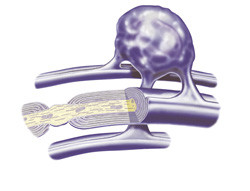Mechanisms of nerve regeneration
Peripheral nerve injuries are common and have a high impact on patients' quality of life. The incidence of these injuries in Europe is 300 000 cases per year, including motor vehicle accidents, lacerations with sharp objects and long bone fractures as the most common causes. Despite advances in surgical techniques, the restoration of motor and sensory functions is rarely achieved, demanding better regenerative therapies. The objective of the EU-funded STAT3-SCHWANN CELLS project was to investigate mediators of the adaptive injury response of Schwann cells in the case of damaged nerves. Regeneration of peripheral nerves is especially poor in humans when surgery has been delayed or in cases of a long-distance axonal regeneration. Due to the slow rate at which neurons regenerate (1–3 mm/day), the regenerating axons remain without target connections for months or years. Under these conditions, the Schwann cells in the distal nerve stump usually remain chronically denervated, losing their capacity to generate repair cells. The STAT3-SCHWANN CELLS study showed that transcription factor STAT3 is expressed in Schwann cells and activated after nerve injury. STAT3 phosphorylation was induced in the distal stumps after transection of sciatic nerves. Researchers discovered that activation of STAT3 led to better survival of long-term denervated Schwann cells. However, they also found that STAT3 was not required for the formation of cellular substrates for regenerating axons and did not control the process of nerve repair. In conclusion, project data revealed that STAT3 is not required for nerve repair, but is essential for the survival of long-term denervated Schwann cells. Thus, STAT3 could become a target to improve the efficiency of regeneration in cases of delayed nerve repair.







